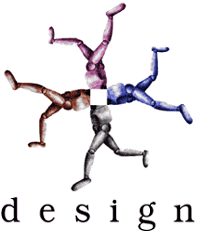What Is Design ?
What Is Design ?


This question can only be answered by saying that design is what it means to you. Each of us has our own likes and dislikes as they relate to film, cars, furniture, fashion, etc.
Understanding why you like what you do and how a designer created a combination of forms and function that appeals to you is the first lesson in understanding design.
I will now digress to a boring definition first and then go on to some very exciting examples that might put things into perspective...
“To create, fashion, execute, or construct according to plan.” The definition of design is incredibly broad because it permeates everything, everywhere, and all of us. It is applied to our world through methods like industrial, graphic, production, and environmental design, filmmaking, lighting, fashion, architecture, photography, cinematography, and the list goes on forever. Even though each of these design applications varies greatly by trade and application, they have one thing in common: problem solving.
Much like a 3D animated element must address specific requirements like story, composition, lighting, interaction, movement, and so on, almost all things that are designed have been fashioned to solve a specific problem. For instance, let’s say you’re working on a very dramatic film and the script calls for an atmosphere of fear. Your first problem would be to define what aesthetic elements you need in order to create an atmosphere of fear. The solution could be dark contrasted lighting, characters in silhouette, low scary music, and edge-of-your-seat camera movement. Or the solution could be a super-saturated, grainy colored image with only the sound of a heartbeat and blurry chaotic camera movement.
Solutions to the aforementioned problem are as varied as there are people in the world —there is no perfect solution, nor is there only one solution. This is where you can really start to learn the definition of design because it’s all very personal.
Not only does design differ according to its chosen discipline, such as architecture vs. graphic design, but even within each discipline, let’s say just architecture, there are a variety of techniques, styles, philosophies, and applications. For instance, Frank Lloyd Wright and Santiago Calatrava are two very famous architects and both have designed countless structures ranging from bridges to skyscrapers, apartment buildings to museums, and music halls to terminals. They are both architects and they both address the same problems, but their solutions, styles, and philosophies differ drastically. Wright is known for designing the Guggenheim Museum in New York City, which could be described as a giant ribbon that spirals toward the sky, almost spring-like in its appearance — it’s a magnificent structure.
Calatrava is known for designing the Quadracci Pavilion at the Milwaukee Museum of Art, another magnificent building. This structure could be described as having giant 250-foot multidirectional sails that tower high into the air like the wings of an albatross and are held together with sailboat-like rigging. Both structures serve the same purpose and both are considered incredibly beautiful, but what makes them different is style.
Personal style is what separates all designers and all people, because personal style is your own unique expression through whatever medium of design you choose. For some it’s through the way they dress or decorate their home; to others it’s a hobby like ceramics, painting, or model making. For those who make design their profession, it becomes a lifelong pursuit of innovative problem solving and the wisdom that unique design can make someone’s life better or more exciting.
Other good examples of the same discipline but different personal style can be seen by looking at works by Syd Mead and Moebius, both industrial design futurists but with distinctly different visions of the future. Mead is known for designing some of the greatest production sets of all time, like Blade Runner, 2001, and even Tron, and could be considered the godfather of slick, organic futuristic functional and social industrial design. Works by Moebius look like some kind of retro- future world filled with oddly colored exotic characters, flying animals, and earthy-organic buildings. Moebius’ work is by far more surreal and dreamlike, but has the same grounded quality of reality and style that Mead shows in his work. Mead’s polished, clearly delineated, huge beasts and giant futuristic cities respond to the same design challenges, yet envision the future in a completely different way. Jesse James of Monster Garage and Paul Teutul of American Chopper are both vehicle designers. James blends old school hot rod with a contemporary thread, and Teutul designs
themed choppers akin to sculptures on wheels.
George Nakashima and CharlesEames were furniture designers. Nakashima used the cracks and knots to his advantage to reveal a single piece of furniture that embodies the soul of the tree. Eames, on the other hand, supplied our nation with some of the most iconic modern industrial furniture by using bent wood technology and revealing the tree in a technological fashion. Each designer was a powerful contributor to our world; they just differed in their approach and solutions.
John Lasseter and Martin Scorsese make films that have a lot of heart. Lasseter, whose expression through animation has redefined modern animated storytelling with some of the most funny, heartfelt, whimsical moments in animation history, is truly a gift to our world.
Scorsese, who tells it like it is through gritty, dramatic live- action tales of human struggle and perseverance, is one of the most influential and highly revered directors ever.
What draws us into the work of these designers? Is it their use of shape and color or could it be the metaphors about life and passion that are woven into the fabric of their work?
Whether it’s based on a vision of the future or a reaction to our current world, each designer examines problem solving with a personal touch. Understanding that personal style is nothing more than one person’s take on design brings you one step closer to understanding
what design is.
I’ve given you plenty of examples of designers that I think represent the best work in their chosen field, but what do you think is the best in any of those given fields? Maybe you think Blade Runner is kind of old school and really like the designs from Unreal Tournament.
Perhaps a bronze Cadillac Escalade with 24" spinners is your cup of tea, while to me a bright green 1970 Plymouth Barracuda 440 is the baddest thing on the street. Maybe you admire the work of a certain video game designer or love collecting a specific comic book.
Who are these designers? What do you like about their work? How do you go about defining the elements that make a design good? The answer to these questions is observation.
Observation is the first step in training your design eye. Your design eye is what distinguishes the difference between good and bad design and, like anything worth pursuing, can only benefit from training and proper application. Start the training with observing the things in your life that you feel are examples of good design. Ask yourself why. Why is this a good design? Could it be the colors, shapes, size, or function? Then ask yourself what could be improved. Does it feel cold and uninviting, and if so, why? What makes it cold and uninviting? Could it be its hard- edged steel exterior? Maybe this design could benefit from softer edges and warmer colors. Through the process of observation, you’ll learn to decipher the good and the bad in design and make mental notes that will eventually apply to your work. Observation means to be interested and open to everything and learning from everything. As a designer you cannot limit yourself; you have to walk into the world with your eyes wide open and learn from other designers and your own experiences.
source:Design First For 3D Artists









0 Comments:
Post a Comment
<< Home